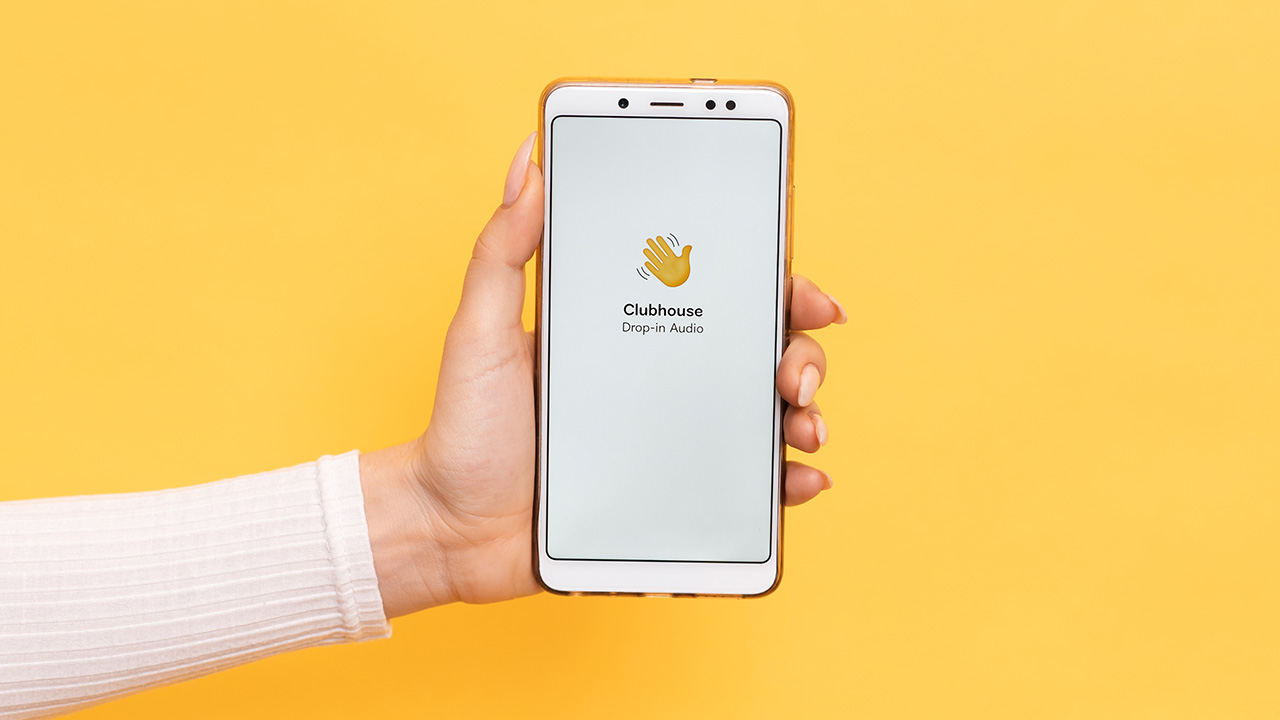It’s little wonder that a social media app based on eavesdropping gained so much traction over the course of a global pandemic. We’re all starved for connection, and Clubhouse, the Silicon Valley darling taking everyone’s iOS by storm, intensifies the intimacy of an old-school party line. Last summer, the app only had a few thousand participants, most of whom were venture capitalists or tech workers looking for ways to socialize as COVID isolation set in, but as of March 2021 (notably, after Elon Musk showed up to chat), Clubhouse is valued at over a billion dollars and boasts millions of users from all over the world.
Still, at first glance, it may seem like an odd fit for museum professionals — it’s self-consciously un-visual and super casual, neither of which track all that well in an institutional setting. So what does the art-scape actually look like on Clubhouse? Here’s a little background.
What is Clubhouse?
After a beta version launched in April 2020, Clubhouse gained a reputation for its hierarchical approach to interaction; unlike Twitter or Facebook, the app is a closed, moderator-based platform. Clubhouse allows its users to congregate in audio chat rooms and discuss various topics (entrepreneurship is a big one, as is wellness); rooms are divided into talkers and listeners, and participants can see a list of everyone involved. “Clubs” are sorted by topic, and any two users can come together and start their own chat room.
The focus on audio makes for a perfect antidote to the Zoom fatigue we’ve all come to experience this past year, since there’s no need to gussy up pre-login. Users can enter and exit rooms with ease, and there’s an air of simultaneous egalitarianism and exclusivity that makes Clubhouse especially intriguing. While developers report that the app will dispense with it’s invite-only VIP feature in the near future, the plus-two “nomination” system helps the user experience feel selective without giving into snobbery. There are some concerns about its somewhat lax privacy and content regulations, but that hasn’t seemed to stop its growth.
How do arts professionals use it?

From left: Clubhouse’s Explore section of recommended conversations; Upcoming For You, which notifies Club followers of upcoming sessions; and inside a chat room, which lists participants, a “Raise hand” button to signal your intention to talk, and a “Leave quietly” button.
Because Clubhouse is inherently personality-driven, users flock to good stories and interesting conversations. Art insiders, especially those who interact with the market, tend to do particularly well on the platform: bad boy art dealer Helge Achenbach and curator Hans Ulrich Obrist have hosted very popular rooms, as has California collector Stefan Simchowitz, whose “Simco’s Art Club” discussions draw hundreds of listeners.
Interestingly, Germany has taken to Clubhouse like a duck to water, making it the most downloaded app in the country in January alone. A quick perusal of the “museum” tag on Clubhouse shows profiles from the Hessisches Museum in Darmstadt, the Museum of Communication in Nuremberg, and the DB Museum, but their accounts aren’t especially active.
Celebrity artists like Ai Weiwei and Takashi Murakami have also attracted large followings, and the drop-in, drop-out nature of Clubhouse’s chat function lends itself to the cult of celebrity that so often occurs in the art world. In a conversation with ARTNews, German art dealer Anne Schwanz described Clubhouse as “an exciting communication tool to reach out to a new audience as well as to meet people you haven’t seen or heard from in a while.”
The intersection between tech, self-help, and creativity seems to be another sweet spot for art enthusiasts on the app. “The Contemporary Arts Club,” run in part by art adviser Astrid Oviedo Clark, has over 12,000 members and runs consistent programming based on collections management, the intersection of art and technology, and artist interviews. Then there are clubs like Crypto Basel, a 16 thousand-follower strong NFT-based community and advice platform run in part by crypto collector and artist Ryan Colditz.
Is it a platform worth watching?
Since Clubhouse does not yet have a monetization plan, the organic, expository nature of the app is perfect for reaching broad art audiences in a manner that feels more personal than a panel but less contentious than Twitter or Instagram. Interested users can connect with curators, collectors, advisers, and artists on a one-to-one basis without the gatekeeping of a gallery opening or symposium. There’s a candid, opt-in nature to the app that gives users all the best parts of digital participation without the strain or distraction of a camera. Plus, the buzz is undeniable: more and more people join every hour and bootleg “nomination” packages are running up to a thousand bucks or more on eBay.
While it remains to be seen exactly what impact Clubhouse will have on the art world at large, one thing is for sure: now more than ever, audiences want to be connected with art on a personal, accessible level, and the app can help museums accomplish that by fostering community.



